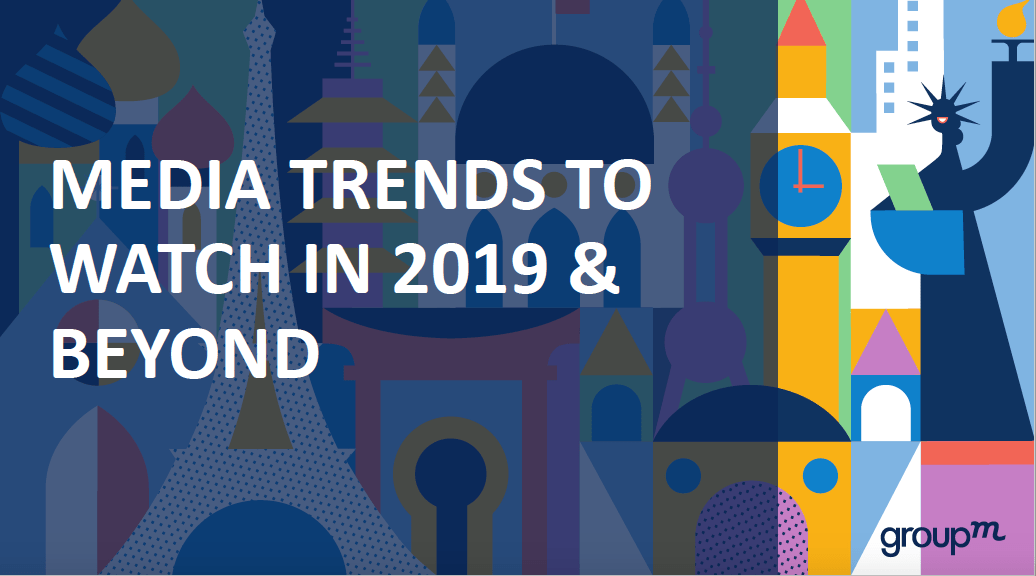With the rise of e-commerce shopping, redirection of advertising budgets towards digital over mainline, integration of influencer marketing as part of the marketing mix, Group M MENA released a report to help marketeers understand the key trends that are going to dominate the industry in 2019 and beyond.
Trend 1 – Most of the online channels have overtaken their offline counterparts
Trend 2 – Competition heats up in the online video space
- Video remains the preferred medium of content with 97% of marketeers claiming it has helped users understand their products and service better, and 76% stating that it has helped increase sales.
- 82% of Internet traffic is expected to be live video by 2020.
- Netflix still dominates the subscription video on demand (SVoD) service field but has recently begun to take heat from a lot of new competitors who are focusing on online video ad spending.
- Advertisers are keen on investing large sums on advertising-funded video on demand (AVoD) as the potential is very high. Brand investment in AVoD is expected to be about $23.8 billion, which accounts for a 5.2% share of global ad spend and is increasing year on year.
- In the MENA region, SVOD revenues are expected to reach $2.13 billion by 2024. Netflix remains the largest MENA SVOD with 3.1 million subscribers, and is expected to increase to about 7.1 million subscribers by 2024. Starzplay stands second with 1 million subscribers and expected to reach up to two million by 2024.
Trend 3 – The emergence of new tech and ad platforms is enabling brands and marketeers to communicate closely with the consumers
- Instagram Stories have now been used by over 1 billion accounts globally with brands investing 212% more on Stories than the previous year.

- Instagram debuted a beta phase of the in-app checkout with select businesses such as Adidas, Burberry, Zara, Huda Beauty, etc. But despite testing with global brands, the feature is only available in US markets.
- With the rise of e-commerce in the MENA region, driven primarily by the UAE and KSA, a majority of retailers in the area are expected to shift towards providing online shopping experiences.
- Almost one-third of 3.5 billion searches are made using voice commands every day, and reports suggest that 50% of all online searches will be voice-based by 2020.
- The length of voice searches is longer than typical searches, which is why brands need to start optimizing their website for long-tail keywords to get considered during a search transaction.
- Visual search will be another disruptor and will follow a similar trend like voice. Brands like Pinterest and Google and other third-party applications have already begun jumping on the bandwagon by implementing tools to aid in the visual search experience.
- Currently, businesses only use 1% of the data collected effectively. With the help of AI and machine learning, the percentage will increase to about 3 0r 4%.

Trend 4 – Consumers become increasingly demanding of brands
- Consumers demand more transparency from brands. A study discovered that 55% of customers found brands to be only somewhat transparent on social media.

- Consumers are expecting more real-time immediate responses from brands.
- 29% of businesses are testing the possibilities of connecting with audiences directly through messenger applications such as Whatsapp and Facebook Messenger.
Trend 5 – Ad-blocking and skippable video formats force brands to look at alternate options like content and influencers
- 49% of online users in Saudi Arabia who are above the age of 18 are implementing ad-blocking technology.
- Influencer marketing is an effective component in the marketing mix.

Trend 6 – E-commerce continues to grow, driven primarily by the region’s youth
- The UAE e-commerce market is expected to grow to 10 million by 2022.
- There has been an 18% increase in online shopping since last year by the Arab youth.











